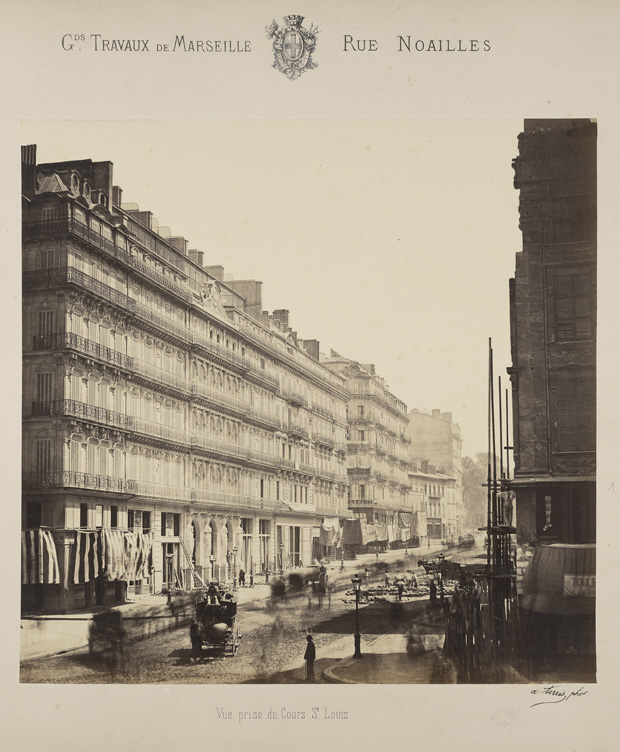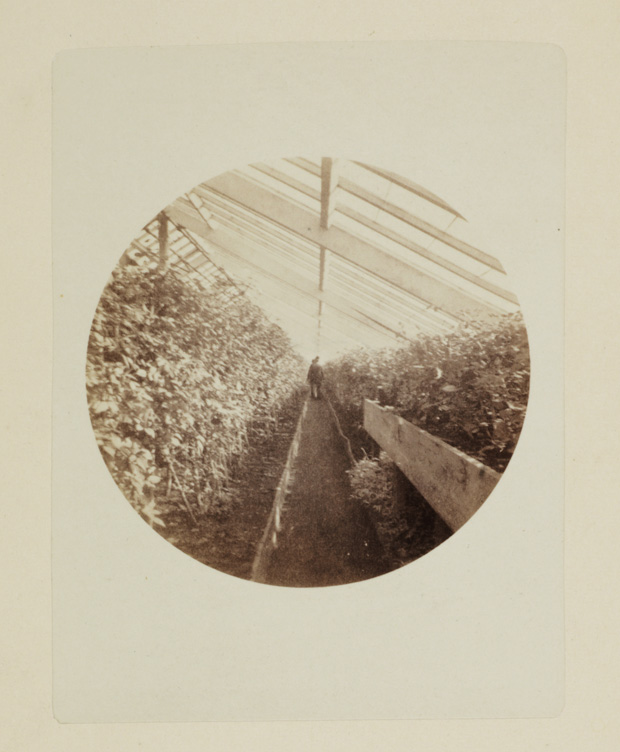Our Collective Invention
The following first appeared in Aperture magazine #214 Spring 2014. Become a subscriber today!
Joel Smith considers the ever-expanding domain of photography history.

Sandy Skoglund, Luncheon Meat on a Counter, 1978. © Sandy Skoglund
A recurring item in the lifestyle section: Four years ago, Author congratulated herself for giving her infant son an original yet non-peculiar name—only to learn that he now shares it with four or five friends. Each generation names its babies by looking around, identifying the overused names among young children, and fixating, futilely, on avoiding those—the clichés of a past so fresh that it is being mistaken for Now. In turn, new parents five years from now will replace the handful of names proving accidentally popular today with a short list of their own. The phase of history we know the least is the present, a perpetually evasive moment that streams through our fingers and hardens, tomorrow, into the recent past.

Studio Wallace, cabinet card, 1880s. Courtesy Adam Fuss

Ilse Bing, Puddle, Rue de Valois, Paris, 1932. © The Art Institute of Chicago
Obeying an intuition as innocent as that of the new parent, each new generation of photography scholars undertakes to explore and map some neighborhood of the medium that its immediate predecessors regarded as barren ground. For my graduate-school cohort in the early 1990s, it went without saying that early-to-midcentury snapshots—in our advisor’s eyes, a minor footnote at best—were addictively engaging and ripe for serious inquiry. We, for our part, were immune to the (soon-to-be-historical) charm of then-current Fujicolor point-and-shoot camera prints. Our obliviousness left them wide open for the next bunch of students, who just as graciously declined to look seriously at the first generation of cell-phone pictures and let them slip by. The scholar’s law must read something like this: whatever photographs would be easiest to look at and study (because they are what surrounds you now), thou shalt ignore until they recede out of reach.
It seems now—as it has seemed to commentators for some thirty years—that every imaginable type of photograph has received its due from scholars and exhibitors. The list includes mugshots, traveling salesmen’s inventory binders, science records, wire-service photos, airbrushed press prints, photographic firing-range targets, advertising placards, security-camera footage. To the point: however long any such list grows, its inclusiveness will soon sound narrow and banal.

Liu Wei, photograph from City . Memories . Scenes, an accordion-album artist book, 2001. Courtesy David Solo
The canonizing of more and more types of photographic objects has been paralleled by another impulse: to expand our sense of these objects’ physical boundaries. In the 1970s, during the first wave of historical rediscovery of the snapshot, only the camera images themselves came under scrutiny. For those looking seriously at snapshots today, it would seem arbitrary to ignore the album pages they populated, the edges of the prints (deckle, printed-border, hand-captioned), and their versos (with their paper brands, processing-lab and date stamps, or personal inscriptions). Such tangible outside-the-image attributes have everything to do with decoding the social position and affective relevance of the snapshot—and in reaching that appreciation, present-day viewers have no doubt been assisted by the contrasting case of the JPEG, a type of image only seldom printed and therefore generally lacking any physical apparatus at all.
The photobook is only the most conspicuous example of a photographically derived object that once looked peripheral to “the history” (peripheral on account of being hand-held, interactive, and printed in ink rather than light-sensitive material), but which now looks manifestly central to photography’s story. Photo-exhibition posters from the (by now legend-prone) 1970s and ’80s are another. Not long ago I asked a group of fellow curators: so, what kind of object will turn out to be a photograph next? With a confident, unrehearsed unanimity akin to that of new parents naming their babies, we immediately agreed: finely printed invitations to exhibition openings—a genre of ephemera that was still common as recently as five years ago, but which now teeters on extinction, except as a signifier of the fiscal health of the most elite museums and galleries.

Spread from Gaston Tissandier’s La Photographie en ballon (Gauthier-Villars, 1886). Courtesy Christine Burgin
At the Morgan Library & Museum, where I collect photographs, a colleague specializes in ancient seals and tablets: stone and clay records of the Mesopotamian origins of writing and print. The oldest object in his collection was crafted some five thousand years earlier than the touchscreen device in my pocket. Bearing in mind this long, “tablet-to-tablet” arc of visual communication helps me keep photography’s relatively brief, simple history in perspective. It also reminds me not to identify the key stages of photography’s history in medium-specific terms (the advent of dry-plate negatives, say, or the handheld camera, or color film) but instead to look for shifts in the way photography has merged with other media. A major example is halftone printing, which married photographs to the printed page in the 1880s. A more recent example is the mobile-phone camera, which seems to have given rise to a hybrid form of picture-writing. I mean the “this-is-in-front-of-me now” photograph in a text message or Facebook post. In those contexts, the photograph lives in the experiential present and serves to substantiate a shorthand comment, in the same way pointing a finger would do in person. And like that manual gesture, such pictures are not meant to outlive the conversation at hand. In them, photography has become a speech act.

George Tice, Tree #12, New York, 1965. © George Tice and courtesy Nailya Alexander Gallery, New York
Minor as this phenomenon of digital “photo speech” may seem, it is notable today because the world of online images, though inexhaustibly vast, is socially anonymous as well as historically flat. Online pictures come from anywhere, which is to say, nowhere. In the perpetually plugged-in condition that obviously owns our future, to encounter a picture stripped of all historical, material, hierarchical, geographic, and rhetorical context will continue to be not just common, but paradigmatic. Any image, even now, is liable to crop up anywhere, accompanied by any other “information” and in the service of any argument or appeal—and the odds, already, are always that the party who conveyed an image to your screen has no authority over or proprietary claim on it.
The predominance of the virtual in our lives is a topic so played-out today that it is almost literally unremarkable. Still, it poses a real challenge for those whose job it is to tell the history of photography as a history of image-bearing objects. If photography curators are still trying to bring viewers in to see “originals,” it is out of a conviction that objecthood has distinct lessons to impart: that the photographs we collect, in all their material specificity— their scale, physical composition, surface texture, color, verso sides, and so on—partake of the circumstances that add up to history.

New York Police Department murder evidence scene, New York, ca. 1910. Photographer unknown. Collection of Thomas Harris

NASA, Spacewalk, 1984 Courtesy NASA. Collection of Alan Lloyd Paris

Found photograph, n.d. Collection of Marco Breuer
Those convictions will come into conversation with the context-averse logic of the Google search in my upcoming exhibition, A Collective Invention: Photographs at Play. The exhibition features about ninety photographs, borrowed from twenty-five collectors (including artists and writers) with varied interests and obsessions. The show consists of a single continuous sequence with no overarching historical or aesthetic structure. Instead, it obeys the free-associative, image-to-image visual logic that is so readily summoned in a blog or Tumblr. The themes that keep the sequence moving forward cannot be identified by concentrating on any single image, but require attending to the characteristics that link it to (or differentiate it from) its neighbors to the left and right.
For example, the sequence excerpted here begins with pairings based on a “nested square” motif, then proceeds through a chain of tropes including reflection, deep perspective, and the absent figure to arrive at the theme of averted heads (of artist Keith Smith and courtroom defendant Lenny Bruce). Such commonalities as these register readily when one encounters them in the even-handed context of reproduction, or onscreen.

Keith Smith, Head Movements, 1966 © Keith A. Smith and courtesy Bruce Silverstein Gallery, New York. Collection of Richard and Ronay Menschel

Lenny Bruce with tape recorder, 1962. Photograph attributed to Sid Tate. Courtesy Morgan Library & Museum, New York
They become more challenging to discover when one is eye- to-eye—or, so to speak, body-to-body—with the insistently diverse objects themselves, which come in all sizes, range freely from highbrow to low, and date from photography’s earliest years to the present. I hope that, walking through the sequence as a whole, viewers will first feel puzzled, then enticed (through the pleasure of puzzle-solving) into the tangled vineyard of interpretation. Ultimately I aim (and I like to think that only a curator enjoys this opportunity) to afford visitors an experience of the richness of the medium’s content and visual appeal— an experience made possible only by an engaged, purposeful encounter with the objects that have been the history of photography.
If others—historians, artists, exhibitors, collectors—feel as compelled today as I do by the concrete, object status qualities of photographs, perhaps this reflects more than mere nostalgia for bygone modes of imagery. I feel increasingly unmoored from objecthood: from the tangible, inconvenient, imperfect physicality entailed by all the tools and processes lately overtaken by my phone. As networked digital convenience continues to flatten what has become one’s “interface” with the world, the chemical, mechanical, bendable photograph looks both more mundane and more enchanted—more like history in one’s grasp—than any invention liable to come our way again.
—
Joel Smith is the Richard L. Menschel Curator of Photography at the Morgan Library & Museum in New York. A Collective Invention: Photographs at Play will be on view at the Morgan from February 14 to May 18, 2014.


























